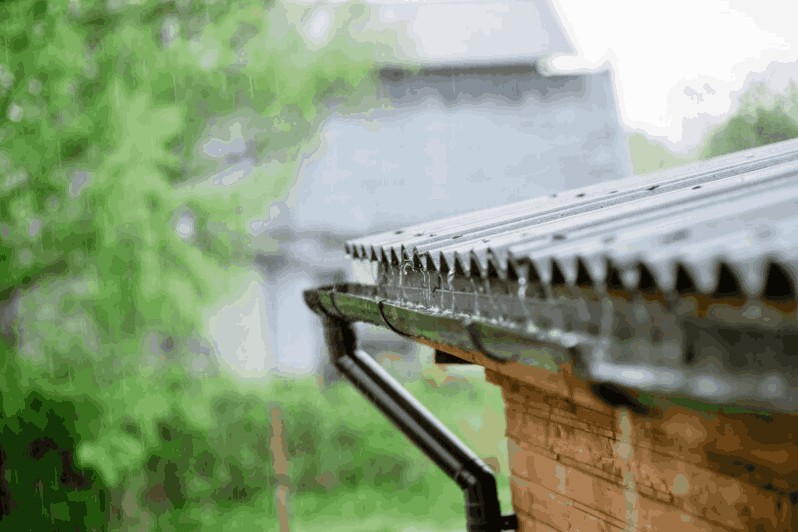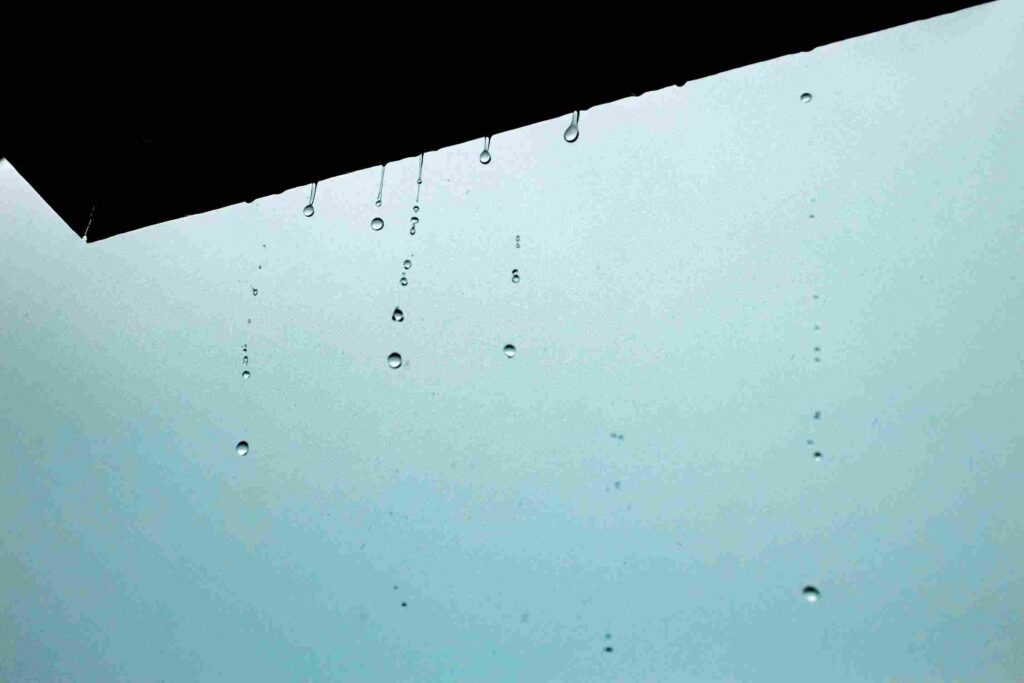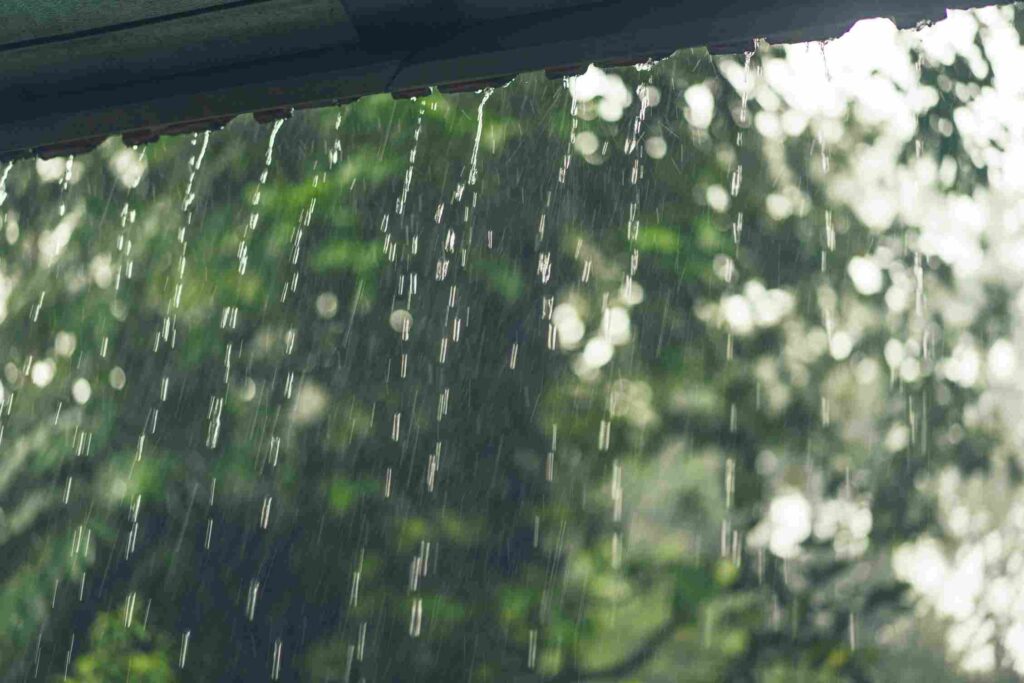Homeowners begin to worry about their roofs as the rainy season draws near. This is due to the fact that roofs are the first line of defense against rainwater and that any damage to the roof can result in serious issues like leaks and water damage. We’ll talk about typical roof problems that occur during the rainy season in this blog post, as well as how to avoid them.
Common Rainy Roof Issues during the Rainy Season
Some of the most typical roof problems that develop during the rainy season include the following:
Leakages
Roof leakage is one of the most prevalent problems during the rainy season. This happens when water enters the house through the roof and damages the walls, ceiling, and other regions. Leaks can be brought on by a number of things, such as cracked flashing, broken shingles or tiles, and clogged gutters.

Water harm
When water enters your home through the roof, it causes damage to the walls, ceilings, and floors. Mold and mildew growth can be harmful to your health and water damage can be quite expensive to remediate.
Broken Shingles
Another typical issue during the wet season is damaged roofs. As a result of severe weather, such as high winds and constant rain, shingles may become damaged and loosen or break.
Obstructed gutters
Water can back up into your gutters and onto your roof, resulting in leaks and water damage. This is due to the fact that blocked gutters make it difficult for rainwater to flow freely, which causes it to build up on the roof and eventually leak into the house.
How to Avoid During the Rainy Season Common Roof Problems
The following procedures must be taken in order to prevent typical roof problems during the rainy season:
Routine inspection and maintenance
Regular maintenance and inspections are the first lines of defense against frequent roof problems. A professional roofer should inspect your roof at least once every year to look for any potential issues. Also, homeowners can conduct their inspections by keeping an eye out for damage indicators like clogged gutters, broken flashing, and missing or cracked shingles.
Replacement and Repair of Damaged Tiles and Shingles
Immediately repair or replace any cracked or broken shingles or tiles found during the inspection. This keeps the roof from suffering additional damage and guarantees that it is prepared to survive the rainy season.
Gutter Cleaning and Maintenance
Another crucial step in avoiding frequent roof concerns during the rainy season is cleaning and maintaining gutters. At least twice a year, and more frequently if you live near a lot of trees, gutter cleaning is recommended. This avoids the buildup of debris, which can clog gutters and obstruct the free flow of rainwater.
Installing Gutter Guards and Rain Diverters
You can install gutter guards and rain diverters to stop water from backing up onto your roof. Rain diverters are positioned atop the roof to direct rainwater away from vulnerable leak-prone locations. Yet, gutter guards allow rainwater to flow freely by preventing debris from building up in the gutters.
Rain during roof replacement?
Both homeowners and roofing professionals may be concerned about rain during a roof replacement. Although work for replacing roofs are typically scheduled for the dry season, unforeseen weather occurrences can always occur. So what happens if it rains when a roof is being replaced?
Contractors can carry on with their job as long as it is safe to do so even if it is lightly raining. However, if there is lightning or severe rain, it is best to stop working right away. The roofing team may encounter hazardous working conditions due to heavy rain, and wet roofing materials may become slick and challenging to handle.

Can you do roofing in the rain?
Many people are unsure if doing roofing during the rainy season is safe. The strength of the rain is what determines the response. It may be okay to keep roofing in a light drizzle, but it’s risky to do so in an intense downpour. Considering that rain can damage the roof, make the roof slippery and increase the risk of accidents.
The benefits of fixing typical roof problems during the rainy season.
Homeowners can profit from the following advantages by taking care of typical roof difficulties during the rainy season:-
Avoiding Expensive Repairs
Homeowners can save money by taking care of roof problems now before it starts to rain. The importance of addressing problems as soon as they appear cannot be overstated. Ignoring minor concerns can result in serious damage that necessitates costly repairs.
How to Prevent Water Damage to Your House
Water damage can be severe, and expensive to fix, and it can also result in health issues like mold growth. Homeowners may safeguard their homes and their families by performing routine roof maintenance and repairs to prevent water damage.
Keeping Your Roof Structurally Integrate
Homeowners can keep their roof’s structural integrity by fixing cracked or broken shingles and tiles. An inadequate roof can jeopardize the stability of an entire house, necessitating pricey repairs and possibly putting residents in danger.
Making Sure Your Family Is Protected
The safety of your family can also be ensured by fixing roof problems during the rainy season. The risks of sliding, falling, and electrocution can be increased by leaks and other roof difficulties.
Conclusion
In conclusion, regular maintenance and inspection, repairing and replacing broken shingles and tiles, cleaning and maintaining gutters, and installing rain diverters and gutter guards are all necessary to prevent typical roof concerns during the rainy season. Homeowners may protect their houses from water damage, maintain the structural integrity of their roofs, avoid expensive repairs, and safeguard the safety of their families by taking care of these problems. For expert help with your roofing needs, and want a roof right now get in touch with JR Roofing and Gutters.
